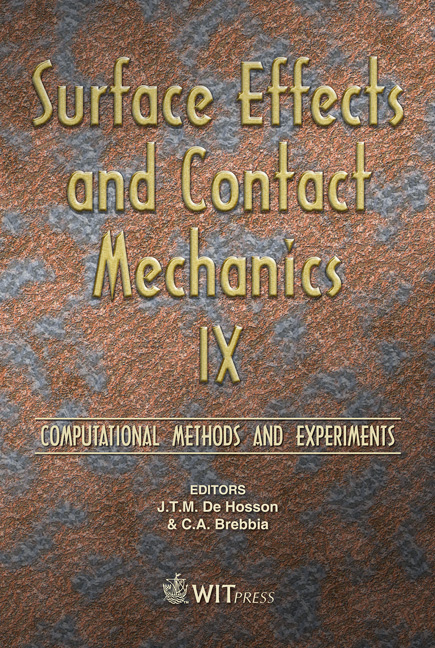External Surfaces Affected By Free Hydrogen In Metastable Austenitic Stainless Steels
Price
Free (open access)
Transaction
Volume
62
Pages
9
Page Range
153 - 161
Published
2009
Size
1,311 kb
Paper DOI
10.2495/SECM090141
Copyright
WIT Press
Author(s)
Y. Katz
Abstract
Malfunction in service of contact components due to fretting fatigue enhanced mainly by the environmental interaction provided incentives to broaden and deepen the understanding of this complex time-dependent process. Metastable austenitic stainless steels affected by solid solution free hydrogen interaction, deserves further elaboration and input. In fact, the aforementioned systems combine both materials and aggressive environment that suppose to be candidates for important applications in future energy technology. As such, the whole issue of tribology turns out to be a major design topic in terms of structural integrity and service life considerations. Fretting fatigue driving force includes in addition to the remote load also the environmental interaction effects. By considering the deformation/environment interaction in metastable austenitic stainless steels at least two origins of damage are recognized, namely, sequential events connected to phase stability and hydrogen embrittlement aspects. Materials were selected from the AISI 300 group of austenitic stainless steels in general, with special attention to the relatively stable AISI 316L steel. Hydrogen was provided either by electrolytic cathodic charging or by high temperature/pressure gaseous charging. Following the current information, regarding fretting fatigue, life degradation due to internal/external hydrogen has been established. Thus, the present study is centered on tracking surface modification activated by environmental interaction confined to the near surface hydrogen affected layer. For this purpose, global and local findings were gathered in a bottom-top methodology. Standard and novel techniques were utilized including nano indentation, scratch tests and acoustic emission tracking that enabled visualization and measurements. Experimentally based, the study emphasized the local approach in contrast to the macroscopic contact mechanics approach. On a local resolution a dislocation model has been attempted, which facilitated advanced analysis as related to wear, damage evolution and near surface behavior assessment. Keywords: austenitic stainless steel, hydrogen interaction, fretting fatigue, surface modification, localized approach.
Keywords
austenitic stainless steel, hydrogen interaction, fretting fatigue, surface modification, localized approach





